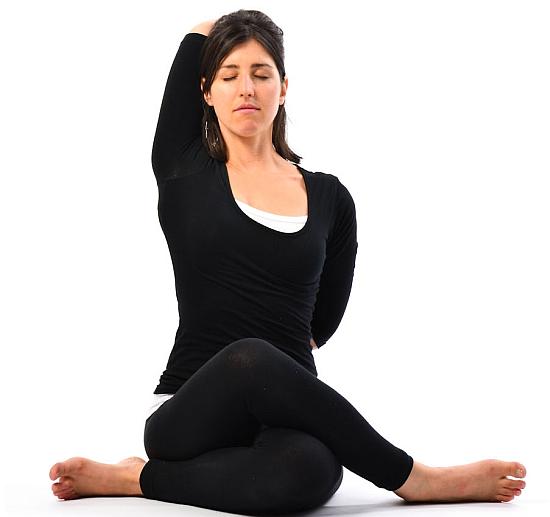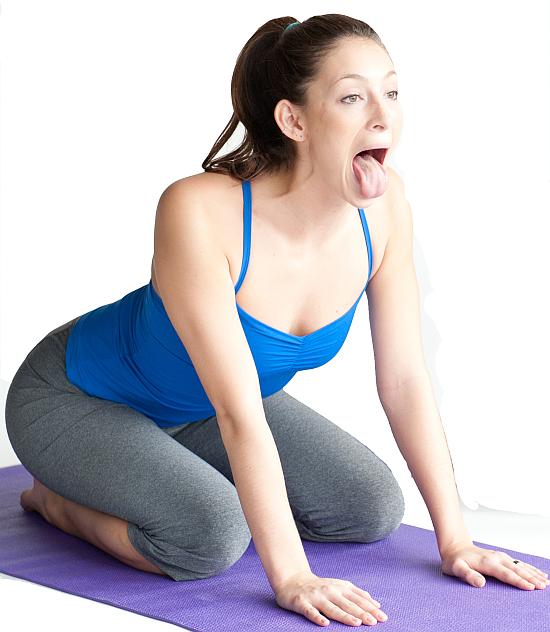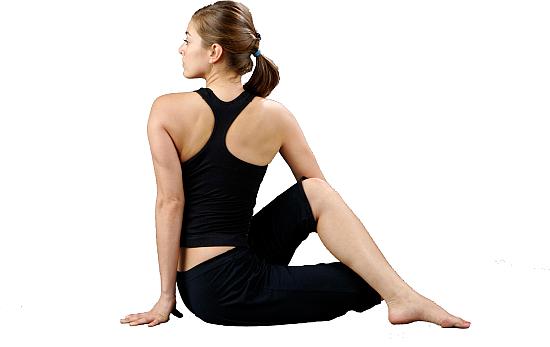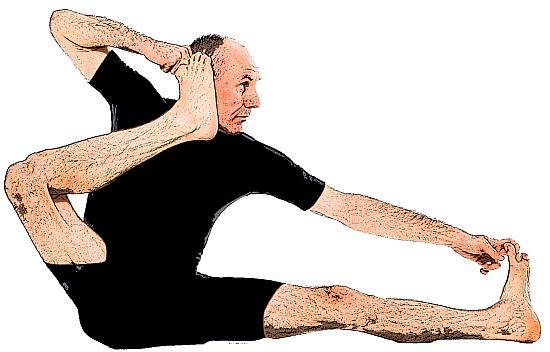Salabhasana is known as locust or grasshopper posture, since Salabha means locust or grasshopper in Sanskrit. It is grouped with Dhanurasana and they are described as baby backbends. Even though it appears simple and unassuming, it is actually quite challenging and interesting than what it looks like. Usually, Salabhasana is considered as a good counter-stretching asana for Paschimottanasana, Sarvangasana and Halasana.
Procedure for Salabhasana
- Place a folded blanket to pad your pelvis and ribs from the ground. You should lie down on the blanket with your belly on the blanket. The arm should be kept to the sides of your body, with the palms up and forehead resting on the ground. You should turn your big toes inwards so that your thighs get rotated. The buttocks should be kept firm to enable your coccyx to be pressed to your pubis.
- You should raise your head, arms, upper chest and legs away from the floor or the blanket. Your body will be resting on your belly, front pelvis and lower ribs. You should ensure that you keep your buttocks firm and the legs are fully stretched. The big toes should remain turned to face each other.
- You should raise your hands until they are parallel to the floor and stretch them actively backwards. You can imagine that some weight is pushing down on the upper arms and you are pushing up against this particular resistance. The scapulas or shoulder blades should be firmly pressed into your back.

- You can look either directly forward or tilt your head a little upward, but you should ensure that the chin does not get pushed forward, putting pressure on the nape of the neck. You should keep the back of the neck long and only lift the base of your skull.
- You can remain in this posture between 30 seconds to one minute. You should exhale and return back to your lying position. You can perform this asana a few times again, with a gap of one or two minutes. The focus of Salabhasana is not on how high you are able to lift up, but on how much you are lengthening your spine.
Benefits of Salabhasana
Salabhasana improves the flexibility in your back and strengthens the muscles in your lower back, spine, backs of your arms and legs and your buttocks. It stretches the thigh, belly, chest and shoulders. It improves digestion and massages the internal organs. It is particularly useful for persons suffering from sciatica and lower back pain, since it provides great relief for both conditions, if practiced slowly and properly. It strengthens the arm and shoulders. It reduces fatigue. Therapeutically, Salabhasana enhances concentration, stimulates the Swadhisthana Chakra. The anatomical focus of this asana is on the neck, upper arms, upper back, lungs, lower back, hamstrings and calves and buttocks. Salabhasana relieves flatulence, indigestion and constipation. It relieves stress.
Precautions and Contraindications for Salabhasana
Persons suffering from headaches, serious back injury and neck injury should not practice Salabhasana.
Preparatory and Follow-Up Asanas
The preparatory asanas for Salabhasana are Bhujangasana, Gomukhasana, Setu Bandha Sarvangasana, Supta Virasana, Virabhadrasana I, Urdhva Mukha Svanasana and Virasana. The follow-up asanas are Setu Bandha Sarvangasana, Salamba Sarvangasana and Bharadvajasana. It is always advisable to do Salabhasana and other asanas under the monitoring and guidance of an expert yoga master. You can avoid injuries when a master is supervising you. You should also do this asana only on a folded blanket and never on the ordinary floor.









